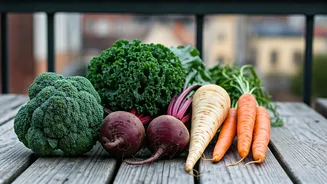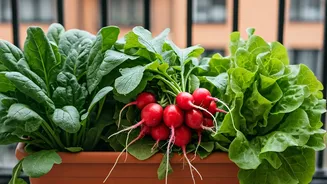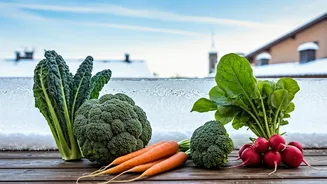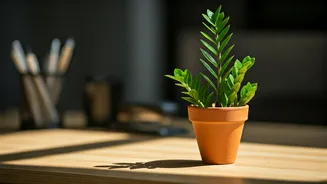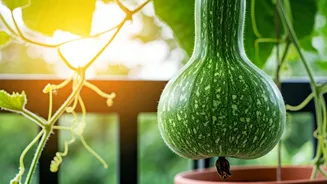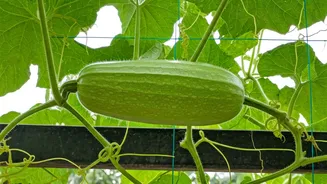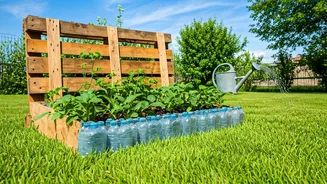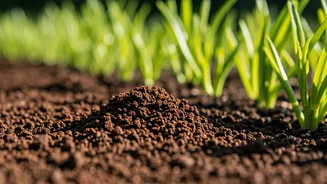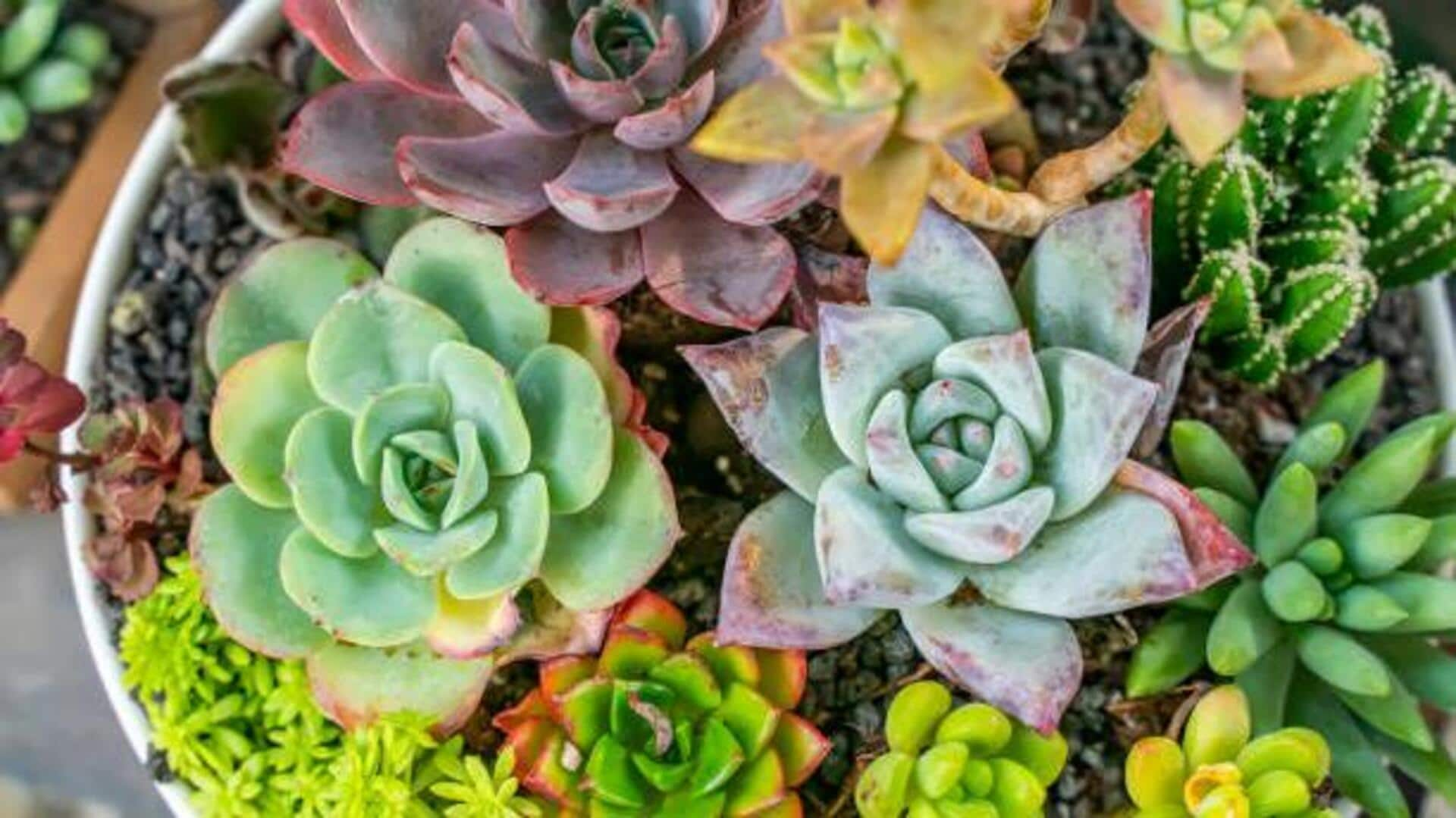Selecting The Right Crops
Choosing the right vegetables is the first crucial step. Focus on cool-season crops that flourish in the cooler months. These are usually the ones that can
withstand the cold and still produce a good harvest. Start with leafy greens like spinach, which thrives in cool weather. Plant spinach seeds in a well-drained area, and give them consistent moisture. Next, consider radishes, which are quick growers, typically ready to harvest within a month. Sow the radish seeds directly into your garden bed, spacing them appropriately to avoid overcrowding. Similarly, mustard greens, with their peppery flavour, are also excellent choices. Sow mustard green seeds in a partially shaded spot and keep the soil consistently moist. In addition, carrots, another cool-season crop, will do well, especially if you plant a shorter variety. Ensure the soil is loose and free from rocks for optimal root development. Finally, plant peas, which not only provide delicious pods but also enhance the soil with nitrogen. Give them support like a trellis for climbing. The selection of these vegetables is the cornerstone of a thriving winter balcony garden, providing a diverse and rewarding harvest.
Preparing the Soil
Soil preparation is just as important as selecting the right seeds. Start by checking the soil's quality. Ensure it is well-draining because this prevents root rot, which can destroy your plants. Amend the soil with compost and well-rotted manure to boost its fertility. This provides the necessary nutrients to support healthy growth, especially for vegetables. Before sowing, make sure that you remove any debris like rocks, weeds, or other materials. This ensures that your seeds have an unobstructed path to grow. For vegetables like carrots, which require loose soil, you must make sure the soil is properly tilled. For plants like spinach, which need less-demanding conditions, proper soil preparation ensures that the roots can readily penetrate the soil. Lastly, make sure that the soil has the proper pH level, as it will affect the nutrient absorption of your plants. Use a soil testing kit to determine the pH levels and make adjustments as needed. Well-prepared soil sets the stage for successful vegetable growth on your balcony, resulting in a plentiful winter harvest.
Step-by-Step Sowing
Once you've selected your vegetables and prepped your soil, you can begin sowing. For spinach, gently press the seeds into the soil about half an inch deep and space them about an inch apart. Cover them with soil and water lightly. Radishes can be sown directly into the garden, about half an inch deep and spaced 1-2 inches apart. Mustard greens are sown similarly, about half an inch deep with a spacing of around 1-2 inches, and lightly watered. When sowing carrots, create shallow furrows, about half an inch deep, and sprinkle the seeds thinly in the furrow. Cover them with soil, and gently pat down the area. Ensure you water them regularly to maintain moisture. Plant pea seeds, a few inches apart and an inch deep, and provide support. Use a trellis or other structure to encourage their growth. Regularly water the sown areas, ensuring the soil stays moist but not waterlogged. Keep an eye out for sprouting seedlings in about a week or two. This careful sowing process is crucial to ensuring your vegetables grow well and produce a great harvest.
Watering and Sunlight
Maintaining optimal watering and sunlight conditions is critical to nurturing healthy vegetable plants. Spinach prefers consistent moisture, so water it deeply once or twice a week, depending on weather conditions. Radishes need regular watering, so the soil doesn’t dry out. Water deeply but avoid overwatering, as it can cause root rot. Similarly, mustard greens require consistent moisture, so water them regularly, particularly during dry spells. Carrots will need consistent moisture, but be careful to not overwater. Water them regularly and deeply, which encourages the roots to develop. Peas like consistent moisture, so water them regularly, especially during flowering and pod development. The amount of sunlight the vegetables receive also affects their growth. Most vegetables will grow well with at least six hours of sunlight. However, some plants, like spinach, can tolerate partial shade. Place your plants where they get enough sunlight to allow them to flourish. Check your plants regularly and adjust your watering schedule depending on weather and plant needs. This careful watering and sunlight management are important for healthy, productive vegetable growth.
Protecting Your Plants
Protecting your plants from pests and diseases is essential to ensure they produce well. Keep an eye out for common pests, like aphids, snails, and slugs. If you see any pests, try natural methods like introducing ladybugs, which eat aphids. You could also spray plants with insecticidal soap. Regularly check for diseases, like leaf spot or mildew. Remove any affected leaves promptly to prevent the spread of disease. Ensure sufficient air circulation, which can reduce fungal diseases. Consider using companion planting to protect your crops. For example, plant carrots near onions. This can help deter pests, reducing the need for pesticides. You could also add mulch around your plants to retain moisture and suppress weeds. Mulch also protects the soil, which helps to reduce soil erosion. Another tip is to rotate your crops to avoid building up pests and diseases. By protecting the plants from pests and diseases, you are taking the final step to guarantee a successful and rewarding harvest from your winter balcony garden.
